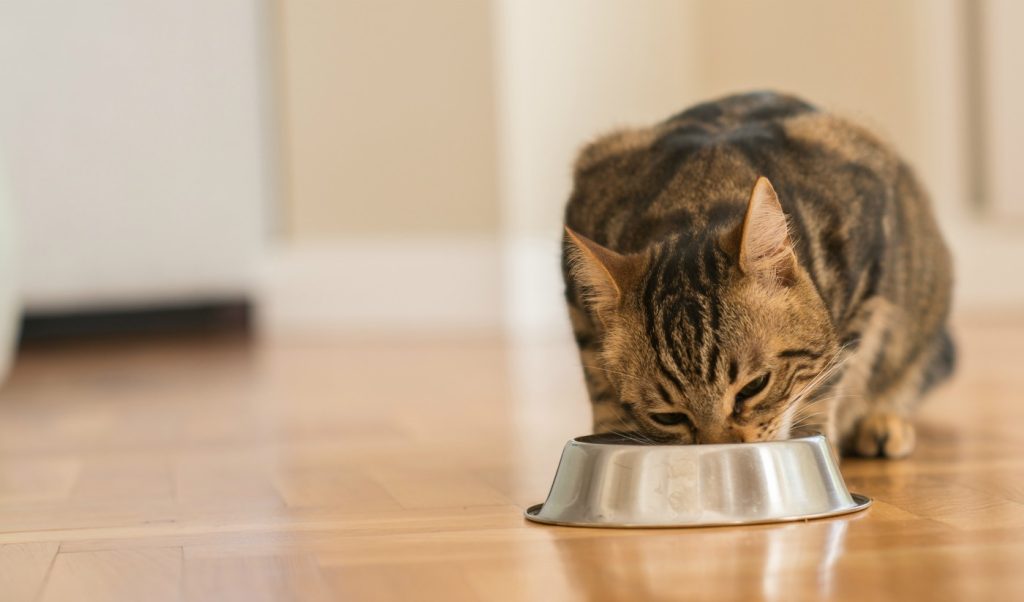If you’re a new cat owner, one of the most common questions you might have is how often you should feed your feline friend. The answer to this question depends on various factors such as age, weight, activity level, and health condition of your cat.
In this article, we’ll discuss everything you need to know about feeding your cat, including the number of meals they need, the right portion sizes, and the types of food to offer.

Why is Feeding Your Cat Properly Important?
Feeding your cat properly is crucial for their health and well-being. Proper nutrition helps maintain healthy skin, coat, teeth, and gums, and supports healthy digestion and immunity. Feeding your cat a well-balanced diet also helps prevent various health problems such as obesity, diabetes, and kidney disease.
How Often Should You Feed Your Cat?
The frequency of feeding your cat depends on their age and activity level.
Kittens
Kittens need to be fed more frequently than adult cats because they have a higher metabolic rate and need more calories to support their growth and development. You should feed your kitten 3-4 small meals a day until they are 6 months old. After that, you can reduce the number of meals to 2-3 per day.
Adult Cats
Most adult cats need to be fed twice a day, once in the morning and once in the evening. However, some cats may prefer to eat smaller meals more frequently throughout the day. You can offer small portions of dry or wet food every 4-6 hours.
Senior Cats
Senior cats may have different nutritional requirements than younger cats. They may need a diet with fewer calories to maintain a healthy weight and support their aging bodies. It’s best to consult with your veterinarian to determine the appropriate feeding schedule for your senior cat.
What Should You Feed Your Cat?
The type of food you offer your cat depends on their preferences, health condition, and age.
Dry Food
Dry food is a popular option for cat owners because it’s convenient and easy to store. It’s also beneficial for dental health as it helps remove tartar and plaque from their teeth. However, some cats may not drink enough water when fed only dry food, which can lead to urinary tract problems.
Wet Food
Wet food is a good option for cats who don’t drink enough water or have a history of urinary tract problems. It’s also a good choice for cats who need to lose weight because it has fewer calories than dry food. Wet food can be more expensive and spoil faster than dry food, so it’s important to store it properly.
Raw Food
Raw food diets for cats are becoming increasingly popular among cat owners. Raw food is believed to be more natural and healthier for cats than processed foods. However, it’s essential to ensure that the raw food is balanced and contains all the necessary nutrients for your cat’s health.
How Much Should You Feed Your Cat?
The amount of food your cat needs depends on their weight, age, and activity level. As a general rule, you should feed your cat based on their body weight and the feeding guidelines on the food packaging.
If you’re unsure about the right portion size for your cat, consult with your veterinarian. Overfeeding your cat can lead to obesity and health problems, while underfeeding can cause malnutrition and other health issues.
Tips for Feeding Your Cat
Here are some tips to help you ensure your cat is getting the right nutrition and maintaining a healthy weight:
Consistency is Key
Cats thrive on routine, so it’s important to feed them at the same time every day. This will also help you monitor their appetite and ensure they’re not overeating.
Don’t Overfeed Your Cat
Overfeeding your cat can lead to obesity and other health problems. Follow the feeding guidelines on the food packaging, and monitor your cat’s weight regularly.
Offer Fresh Water
Cats need access to fresh, clean water at all times. Make sure their water bowl is always full and clean.
Monitor Your Cat’s Weight
Regularly monitor your cat’s weight to ensure they’re maintaining a healthy weight. If you notice any significant changes in their weight, consult with your veterinarian.
FAQs
How do I know if I’m feeding my cat enough?
You can monitor your cat’s weight and follow the feeding guidelines on the food packaging. If you’re unsure, consult with your veterinarian.
Can I feed my cat table scraps?
It’s best to avoid feeding your cat table scraps as they may not provide the necessary nutrition for your cat and can cause digestive problems.
Can I leave food out for my cat all day?
It’s not recommended to leave food out for your cat all day as it can lead to overeating and obesity. Follow a consistent feeding schedule and monitor their appetite.
Should I feed my cat a raw food diet?
Raw food diets for cats are becoming increasingly popular, but it’s essential to ensure the diet is balanced and contains all the necessary nutrients for your cat’s health. Consult with your veterinarian before making any dietary changes.
What should I do if my cat is not eating?
If your cat is not eating, consult with your veterinarian as it may be a sign of an underlying health condition.
Conclusion
Feeding your cat the right amount of food and providing a well-balanced diet is crucial for their health and well-being. The frequency and amount of food your cat needs depend on their age, weight, and activity level. It’s also important to offer fresh water at all times and monitor their weight regularly. Consult with your veterinarian if you’re unsure about the right nutrition for your cat.
